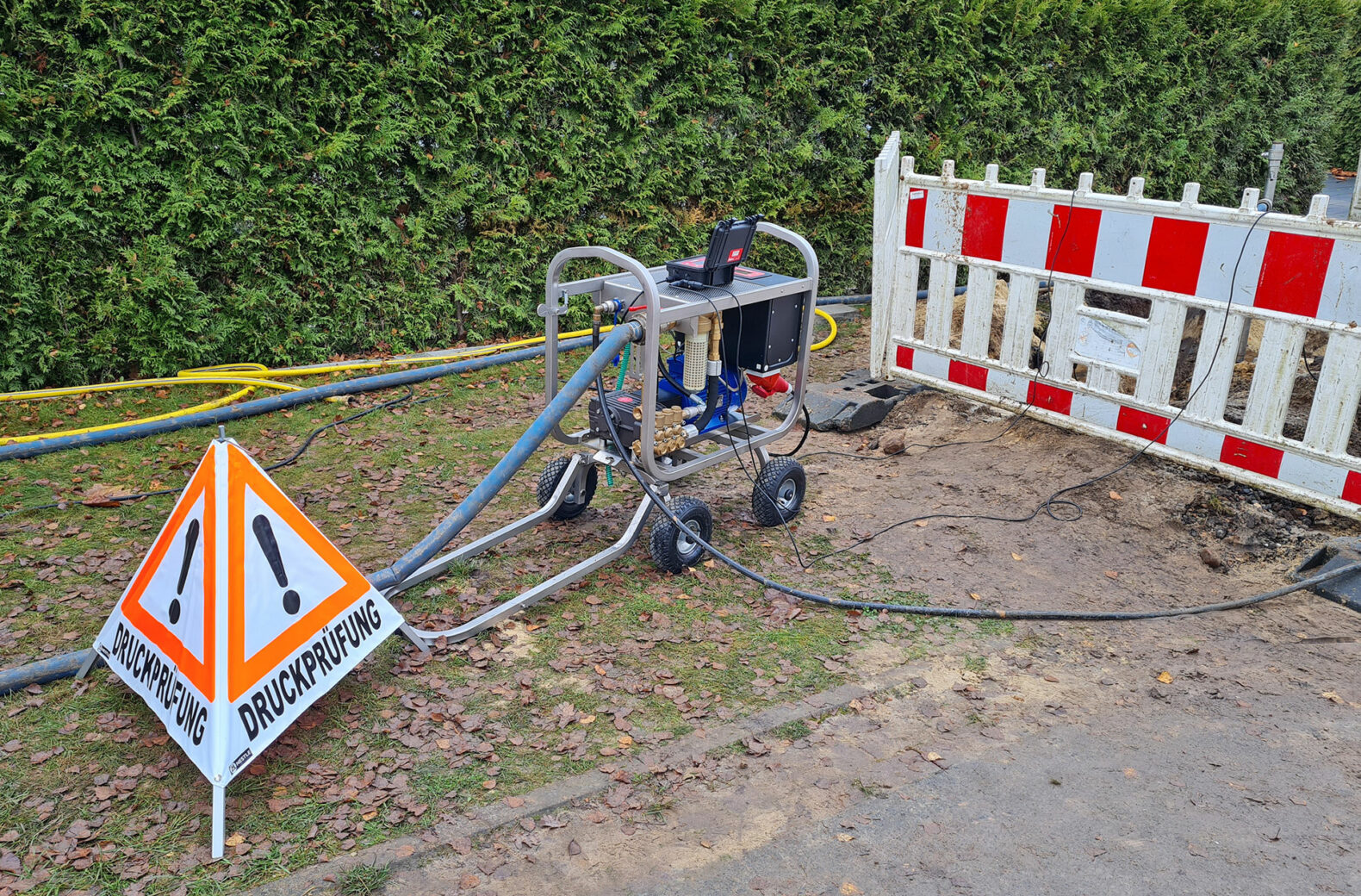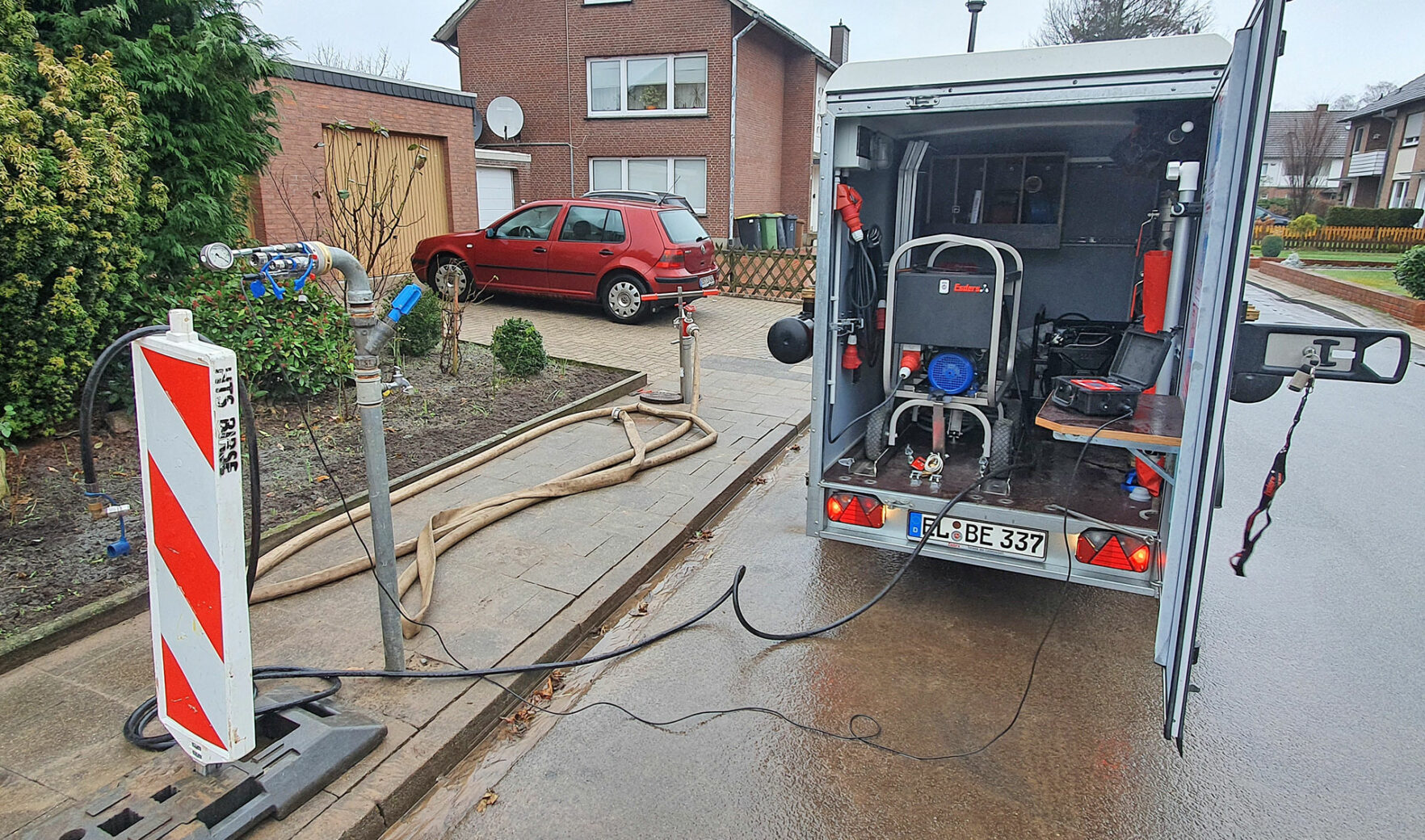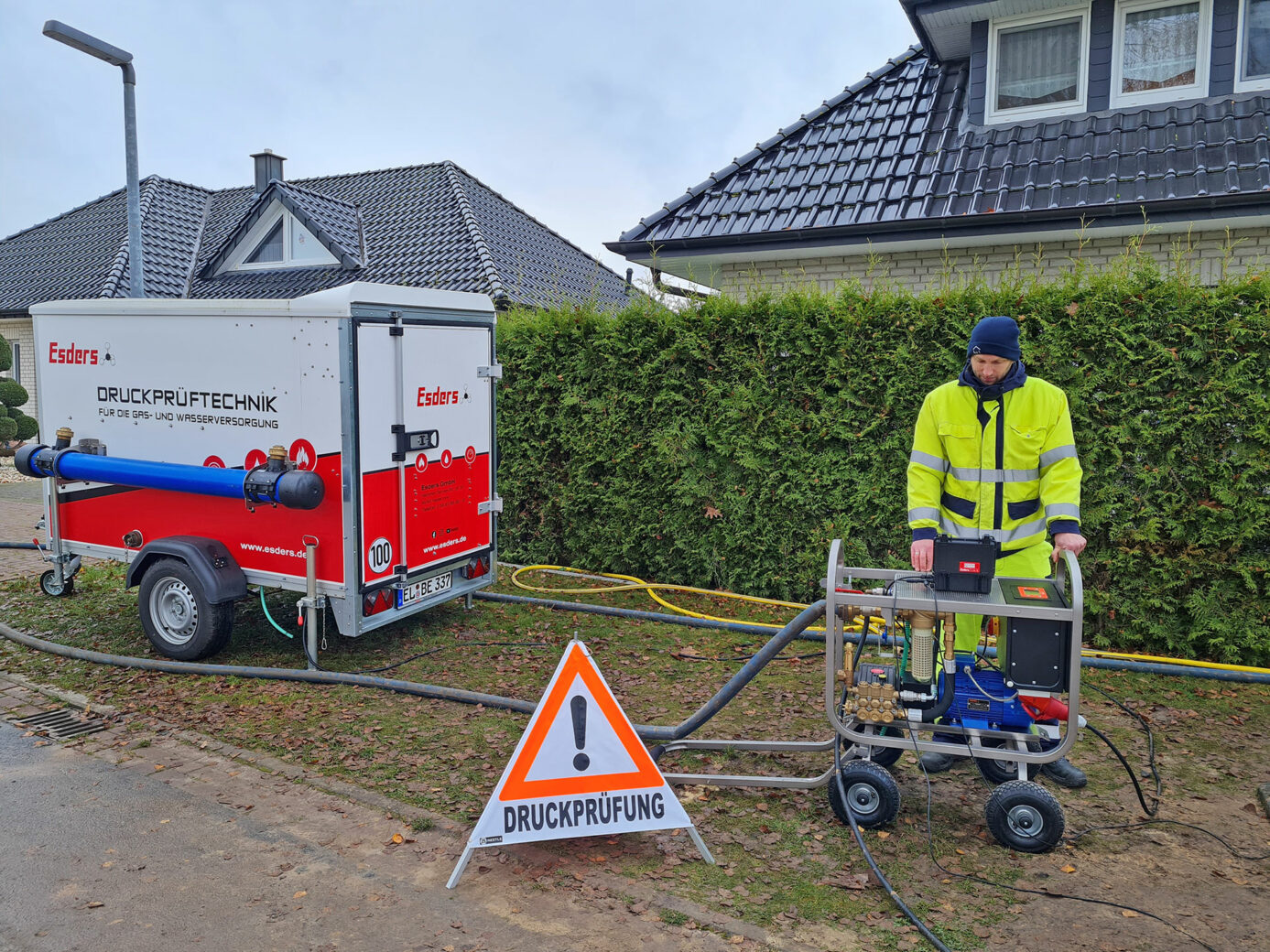Table of Contents
Pressure tests are an essential component in the field of pipeline construction. With the use of a pressure test, the proper execution of the installation of all pipeline parts and ultimately the tightness of the pipeline is determined. Without a successful pressure test, no newly laid pipeline can be put into operation.
In the field of drinking water distribution systems, the requirements for carrying out a pressure test are defined by DVGW Code of Practice W 400-2. The worksheet lists different procedures for water pressure tests, each of which follows a defined procedure. The decisive factor for assessing the tightness is always a main test phase at the end of the procedure, in which the determined pressure drop is compared with a permissible pressure drop. If the pressure drop during the main test is less than the limit value, the pipeline is considered to be sufficiently tight.
The differences in the methods take into account the characteristic reactions of the pipe material to water pressure. For example, there is the contraction method especially for polyethylene pipes (PE 80, PE 100, etc.), which is now one of the most common methods because more and more PE pipes have been laid for drinking water pipes for years.
Verifying the residual air
Every pressure test in the W 400-2 range includes a pressure drop test, which is used to check that the air is released.
Sufficient air clearance within the pipeline to be tested should be ensured, otherwise the results of the pressure test may be falsified. If there is still a small amount of air left in the pipeline, a possible leak could be covered by the expanding residual air, i.e. the pressure is kept at a constant level during the main test by the air percentage.
The guarantee and also the verification of the pipeline being free of residual air are thus critical factors in a pressure test, which is why they will also receive special attention in the future version of Code of Practice W 400-2.
A revision of W 400-2 is expected to be published in the summer of 2022, in which, among other things, additional requirements and measures will be specified to ensure proper and meaningful verification of residual air. To prevent manipulation during the pressure drop test, for example, the use of a digital water meter will be mandatory. In combination with a pressure test case, such as the smart memo, the measured value of the drained water volume must be transmitted digitally to the pressure test case so that no measured value has to be entered manually.
There will also be additional requirements for the contraction procedure, which is intended to ensure that the pipeline to be tested is sufficiently free of air. The requirement for a minimum pressure drop during the preliminary test is intended to provide an additional measure of residual air in addition to the pressure drop test.

Pressure test case operates motor test pump
We follow these developments closely and develop innovative products that meet all current requirements of worksheet W 400-2. In addition, we offer innovative solutions that can simplify the work and/or save a lot of time for the people who use our products.
In addition to the smart memo pressure test case, which enables simple and error-free execution of all procedures according to W 400-2 with the help of menu-guided test sequences, we are offering a new generation of motor test pump, the MPP 30-30.
The MPP 30-30 is used to build up and maintain pressure during W 400-2 procedures. An additional integrated flow measurement can be used to determine the volume of water that is pressed into the pipeline by the pump. The MPP 30-30 is also smart and can communicate and exchange data with the smart memo pressure test case. The smart memo can remotely control the MPP 30-30, further automating the test sequence and preventing incorrect operation or incorrect execution of the procedure.

Air volume determination during pressure build-up phase
As an innovative solution for the more stringent requirements for residual air in a pipeline, we offer air volume determination already during the pressure build-up phase by means of the combination of smart memo and MPP 30-30.
We use advanced measurement technology and physical principles to provide the user with a result for the relative air content in the pipeline directly after the pressure build-up phase. This provides the user with a reliable and meaningful assessment of the absence of air in the pipeline.
Usually, an insufficient amount of residual air is only detected when the pressure drop test is completed (i.e. approx. 1.5 hours later). As a result, the pipeline must be vented again and the test is repeated in its entirety, including the depressurisation phase.
With our air volume determination, an insufficient amount of residual air is detected at an early stage and the user will save unnecessary time and effort.
Ready to take your pressure testing to the next level?
Let us help you do it! Enter your contact details and our experienced technicians will get back to you right away. We look forward to assisting you with your air clearance and other important testing needs. Start now by filling out the form!

